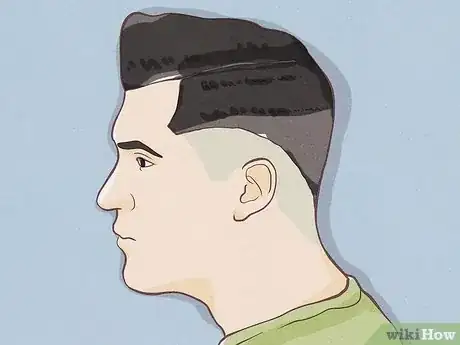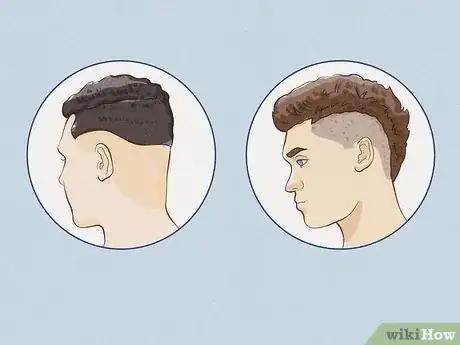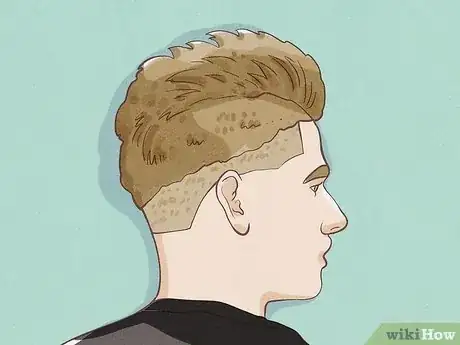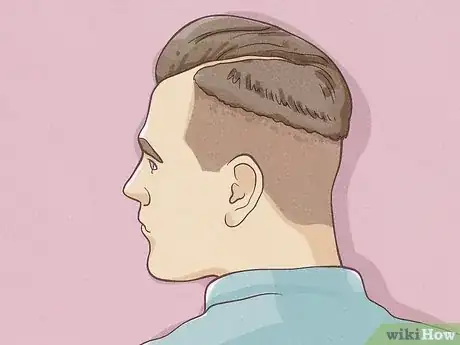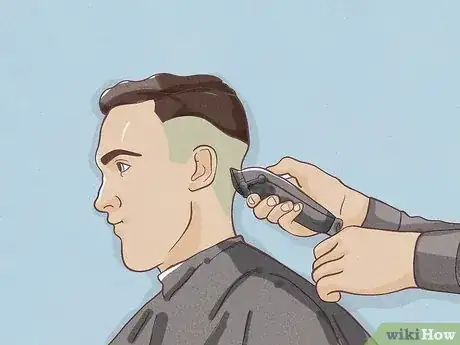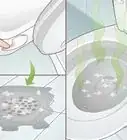This article was co-authored by wikiHow staff writer, Luke Smith, MFA. Luke Smith is a wikiHow Staff Writer. He's worked for literary agents, publishing houses, and with many authors, and his writing has been featured in a number of literary magazines. Now, Luke writes for the content team at wikiHow and hopes to help readers expand both their skillsets and the bounds of their curiosity. Luke earned his MFA from the University of Montana.
Learn more...
You’re about due for a new ‘do, but you aren’t totally sure what to ask for: a taper or a fade? Both styles look totally sharp, but what’s the difference, exactly? The confusion is understandable, since they’re so similar, and even barbershop regulars tend to mix them up from time to time. We’ll fill you in on the particulars of both tapers and fades, and give you a couple pointers on which cut you should rock.
Things You Should Know
- A taper is a cut that gradually transitions from longer hair on top to shorter hair toward the base of the neck.
- A fade is a dramatic transition from long hair to extremely short hair or bare skin. In other words, it’s a more dramatic taper.
- Tapers tend to be more casual and require less upkeep, while fades are sharper and require regular touch-ups.
Steps
What is a taper?
-
1A taper is a haircut that gradually shortens toward the base of the neck. Typically, a taper starts with longer hair at the top of the head, with the hair on the sides and back of the head transitioning to a shorter length. This change can be as subtle or dramatic as you like, making this a versatile cut that allows for plenty of volume on top while keeping things neat down below.[1] X Research source
- Tapers are generally cut using clippers of gradually decreasing size, but can also be done freehanded with scissors or shears for a more natural look.
-
2Tapers often come as high, mid, and low cuts. These terms describe where on the head the change in length is most dramatic. With a high taper, the change occurs high on the head, going from long to short hair right away. With a low taper, the hair stays longer further down, then becomes shorter around the base of the neck. A mid taper happens—you guessed it—toward the middle of the head.[2] X Research source
- Tapers can also accommodate different lengths of hair, from a generally short cut, to a cut that leaves much more hair on the top and sides.
- A taper cut can work on pretty much anyone, regardless of gender or hair texture. This makes it an incredibly popular and fashionable style.
What is a fade?
-
1A fade is a transition from longer hair to very short hair or bare skin. Like a taper, the length of hair transitions from long to short as it moves down the head. However, a fade ends with an extremely short cut that exposes the skin around the base of the neck, often making for a higher hairline in the back.[3] X Research source A barber achieves this by starting with a large clipper, then using smaller and smaller clippers that gradually cut the hair shorter further down.
- In other words, a fade is a very dramatic type of taper.
- Fade lengths are often identified by the size of the last clipper guard used. For example, a #1 fade ends with a clipper guard that leaves 0.25 in (0.64 cm) of hair at the base of the taper, since this is the size of the #1 clipper guard.
-
2Fades also come as high, mid, and low cuts. That said, the change is much more dramatic, and the differences between each cut are much more noticeable. For example, a high fade becomes very short, very high on the scalp, exposing quite a bit of skin on the back and sides of the head. A low fade, on the other hand, preserves more hair and fades to bare skin closer to the base of the neck.[4] X Research source
- A skin fade fades to bare skin.
- A drop fade creates a U-shaped neckline from ear to ear.
- A burst fade creates a circular fade around the ears, and commonly transitions to a faux-hawk up top.
- A temple fade is a simple style that fades at the temple, elongating the face shape.
Which is right for you?
-
1Choose a taper for a low-fuss style with fairly easy upkeep. A taper can be worn messy on top, or styled with hair gel or cream for a more put-together look, but either way your hair will be on-point. They do take a bit of upkeep, and you’ll need to get to the barber about every 4 weeks to keep it looking fresh.[5] X Research source
-
2Opt for a fade if you want a bolder, more striking style. A fade takes a bit more skill on the barber’s part, and a good fade is an absolute flex. That said, they do take a little more TLC—they’ll look a bit less sharp just 3 days after a cut, and some at-home maintenance on the neckline with a simple shaving razor is recommended.[6] X Research source If you ask for a fade, be prepared to visit a barber every 2 weeks to keep it fresh.
- Touch-up cuts for both fades and tapers generally cost much less than a full cut. Just ask your barber about their touch-up options and pricing.
Related Terms
-
1A “taper-fade” is actually just a taper. The term caught on because people tend to confuse the 2 styles, and so would use their names interchangeably. However, if you ask a barber for a taper-fade, they’ll most likely just give you some form of a taper. Or better, they’ll ask you to clarify what sort of style you’d like. It’s probably best to just avoid the term and ask for either a taper or a fade.[7] X Research source
-
2“Blending” means merging hair lengths without an obvious line. When your barber is making that short section meet the long section just right to create the perfect fade or taper, they’re “blending” the hair so that the transition is gradual and smooth. An inexperienced barber may leave behind lines or noticeable “steps” between clipper sizes.[8] X Research source
- A “blend” haircut may refer to a cut that combines both a taper and a fade, with long hair on top transitioning to shorter hair around the sides, and a neckline that quickly fades to skin. This is also commonly just called a low fade.
Other wikiHows

 How to Relieve & Prevent Headaches & Migraines Fast
How to Relieve & Prevent Headaches & Migraines Fast
 Best Ways to Unclog a Toilet
Best Ways to Unclog a Toilet

 How to Take a Screenshot on a Windows PC: 8 Simple Tricks
How to Take a Screenshot on a Windows PC: 8 Simple Tricks

 How to Take Care of Potted Orchids
How to Take Care of Potted Orchids

References
- ↑ https://www.themodestman.com/taper-vs-fade/
- ↑ https://www.irreverentgent.com/taper-vs-fade/
- ↑ https://www.irreverentgent.com/taper-vs-fade/
- ↑ https://www.themodestman.com/taper-vs-fade/
- ↑ https://www.instyle.com/hair/taper-haircut
- ↑ https://www.styleseat.com/blog/keep-your-fade-fly-between-appointments/
- ↑ https://www.themodestman.com/taper-vs-fade/
- ↑ https://www.patrickthegroomsmith.com/blogs/what-is-blending/
About This Article

